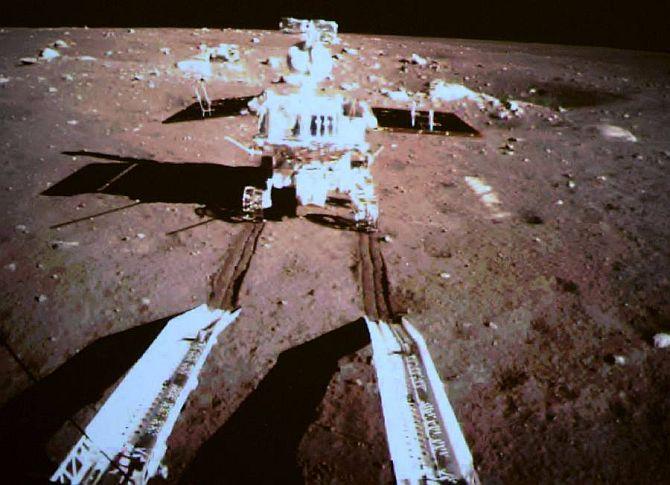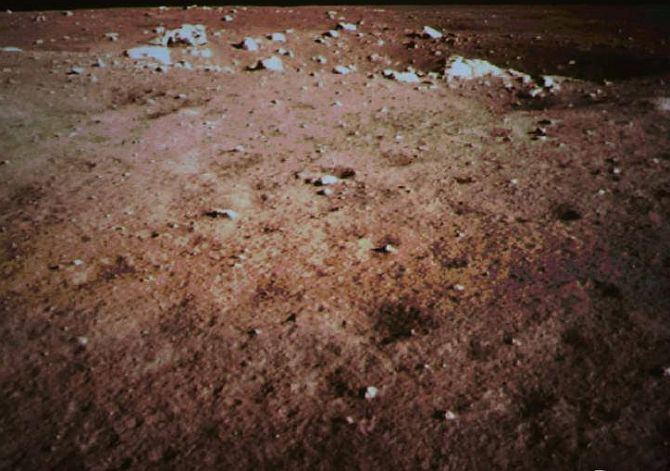China's first lunar probe on Sunday successfully separated from the lander and left deep traces on its loose soil, hours after the communist giant carried out the world's first soft landing on the lunar surface in nearly 40 years.
"China's first moon rover, Yutu, or Jade Rabbit, separated from the lander early today. The six-wheeled rover touched the lunar surface at 4:35 a.m., leaving deep trace on the loose lunar soil," state-run Xinhua news agency reported.
The process was recorded by the camera on the lander and the images were sent to the earth. After the separation, the rover and lander will take photos of each other and start their own scientific explorations, it said.
The landing of the probe Chang'e-3, with China's first lunar rover, marked the first time that a soft landing has been made on the moon in nearly four decades.
China's first lunar rover yesterday successfully landed on the moon, making the communist giant one of three world powers to make a "soft landing" as part of an ambitious programme that aims to put a Chinese astronaut on the moon.
...
China's Jade Rabbit leaves trace on moon
Image: The rover's first image from the moon surface.The landing was carried out 12 days after the probe blasted off on an enhanced Long March-3B carrier rocket.
It also made China one of only three nations -- after the United States and the former Soviet Union -- to soft land on the moon. A soft landing is one which does not damage the spacecraft and the equipment it carries.
The probe is equipped with shock absorbers in its four "legs" to cushion the impact of the landing, making Chang'e-3 -- that includes a lander and a moon rover called "Yutu" or Jade Rabbit -- the first Chinese spacecraft with "legs."
The lunar probe touched down in Sinus Iridum, or the Bay of Rainbows, at 9:11 pm local time, according to Beijing Aerospace Control Centre.
Chang'e-3 relied on auto-control for descent, range and velocity measurements, finding the proper landing point, and free-falling.
Chang'e-3 adopted a variable thrust engine completely designed and made by Chinese scientists. It can realise continuous variation of thrust power ranging from 1,500 to 7,500 newtons, according to Wu Weiren.
Yutu's tasks include surveying the moon's geological structure and surface substances and looking for natural resources. The lander will operate there for one year while the rover will be there for three months.
Chang'e-3 is part of the second phase of China's lunar programme, which includes orbiting, landing and returning to the Earth. It follows the success of the Chang'e-1 and Chang'e-2 missions in 2007 and 2010.
"The success also made China the first country that conducted a soft landing on Sinus Iridum, or the Bay of Rainbows, a lunar area that remains unstudied and silent for hundreds of millions of years, stamping new foot prints in the history of mankind's lunar exploration," Xinhua news agency said in a commentary.
Chang'e-3's graceful landing, one of the three key stages of China's lunar programme featuring "cycle, land and return," made a historic breakthrough, leaving the achievements of her previous two sisters Chang'e-1 and Chang'e-2 far behind, it said.
A small rover by Chang'e-3 on the moon demonstrated a big stride of China, it said.
According to statistics, 129 lunar explorations were seen before Chang'e-3 landed, but only half of them succeeded, among which only the US and the former Soviet Union completed 13 unmanned soft landings successfully, it said.



article